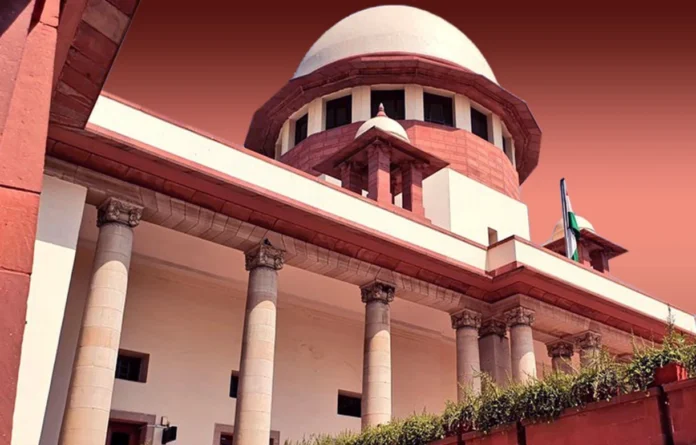The Supreme Court on Monday directed the Election Commission of India to file an affidavit within three weeks, explaining the reason behind its decision to increase the number of voters per polling station from 1200 to 1500.
The Bench of Chief Justice of India Sanjiv Khanna and Justice Sanjay Kumar, expressing concern over the convenience of voters, asked the Commission to explain how would it handle the situation, in case the number of voters in a polling station exceeded 1500.
The Bench made the observation, while hearing a petition challenging two notifications issued by the Commission on August 7, 2024 and August 23, 2024, over the increase in the number of electors at each polling station in each constituency of the country.
Appearing for the Commission, Senior Advocate Maninder Singh contended that the polling stations have been accommodating the increased number of voters since 2019. The Commission consulted all the political parties for every booth before taking such a decision.
Noting that a polling station might have several polling booths, the Bench asked whether the policy would apply to a single booth-polling station also.
Senior Advocate Singh replied that the affidavit would provide clarification on this aspect also.
The top court of the country directed the Commission to file the affidavit within three weeks and listed the mater for further hearing in January 2025.
Earlier, the Apex Court had directed that an advance copy of the petition be served to the nominated/standing counsel for EC, so they may obtain instructions on the factual position and appear in Court on the next date.
Senior Advocate Dr Abhishek Manu Singhvi, appearing for the petitioner, had termed the Commission’s impugned ad-hoc decision an act of ‘voter disenfranchisement’.
He contended that the increase in the number of voters per polling booth from 1200 to 1500 would create challenges for voters. The decision was likely to cause the exclusion of underprivileged groups from the election process, as they could not spare the disproportionate amount of time for voting.
Reading clause 7.4(iii) of the August 7 notification issued by EC, Singhvi explained that if there were up to 1500 electors at one polling booth, there would be no rationalisation. Only if the number exceeded 1500, a new polling booth would come into the picture.
Mentioning certain newspaper reports, the Senior Counsel said that long queues or waiting period, coupled with harsh weather conditions, would discourage the voters.
Filed under Article 32 of the Constitution by a social activist, the petition contended that the decision to increase the number of electors per polling station was neither supported by any data, nor had any rational nexus with the object sought to be achieved.
As per the petition, the Commission, by increasing this limit, has compromised the operational efficiency of polling stations, potentially leading to longer waiting times, overcrowding and voter fatigue.
Since 2011, there has been no census. Therefore, the Respondent no. 1 (Election Commission of India) has no fresh data to enhance the number of electors from 1200 to 1500.
Mentioning Section 25 of the Representation of the People Act, which dealt with the provision of polling stations in constituencies, the plea argued that the sufficiency of polling stations under the law ought to mean sufficient to not cause structural barriers to voting, and enabling the voting by marginalised groups.
It said Section 25 of the said Act would have to be read in a manner that strengthened the democracy, rather than resulting even in the possibility of exclusion of electors. Since with the introduction of EVMs, the actual process of casting and counting the votes has become rather easy as compared to what it was in 1951.
The plea further contended that a voter took around 60-90 seconds to exercise his/her franchise. As elections were typically held for 11 hours, only 495-660 persons would be able to vote per polling station.
Considering the average voting percentage of 65.7 percent, it was perceivable that a polling station prepared to accept 1000 electors could accommodate about 650 voters, said the plea, adding that some booths registered a voter turnout in the range of 85-90 percent.
It said in such a situation, about 20 percent of voters would either end up standing in queue beyond the voting hours or due to long waiting times, would abandon exercising their right to vote. Neither of this was acceptable in a progressive republic or a democracy, it added.
The petition contended that to accommodate this large number of voters, there must be a proportional expansion in polling booth infrastructure.
It said in 2016, the Commission directed that the maximum number of electors assigned to a polling station be limited to 1,200 in rural areas and 1,400 in urban areas. With the enhancement of figures, there was possibility of disenfranchisement.
The petition said the practice of increasing the upper limit per polling station would lead to disparate impact on marginalised communities and low-income groups, particularly daily wagers, rickshaw pullers, maids, drivers and vendors. The long waiting hours for these people would result in deprivation of wages, it added.
The PIL sought directions to the Commission to maintain the number of electors per polling booth as 1200 (as done from 1957 to 2016) and have a sufficient number of polling stations in terms of the mandate of Section 25 of the RP Act.
It further sought direction to the Commission to progressively reduce the number of electors per polling station, by removing structural/institutional barriers to the exercise of the right to vote, having regard to the principle of non-retrogression.


